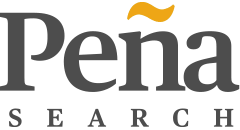February 9, 2021
Resume Best Practices to Set You Apart
The way we work has changed a lot: we network via email, interview via Zoom and work together from afar. But one staple of the workforce seems to be a mainstay: the resume. Typically, the first thing a potential employer requests, resumes have stood the test of time as integral selling points for any job or candidate. It’s key to follow resume best practices in order to stand apart.
So…how does yours look right now? When’s the last time it was updated? It’s time to ensure that your most important professional document is ready to be sent to your dream job at a moment’s notice.
Here are some resume best practices that will help you land your next big job:
Be Thorough, But Concise
Gone are the days where resumes must fit on one page. In this competitive job marketing, sometimes more is more. That said, there is a fine line between explanation and too much information.
For example, you should definitely spell out the specific duties of your current position and past experiences relevant to the job you want. You might not, however, need to include the various responsibilities you managed while president of your college fraternity. The same applies to skills. Proficiency in Spanish and the Adobe Creative Suite are definitely assets to your resume. It’s best to leave off generic skills like “computer knowledge.”
Layout is Everything
According to HR Drive, recruiters look at an individual resume for an average of 7.4 seconds. With so little time, it’s important to catch your reader’s attention quickly. Enter the Strengths and Qualifications cover page.
Different from a cover letter, a Strengths and Qualifications page cleanly lists out your most relevant skills and the experiences that helped you hone them. For example, if you are applying for a fundraising position, you may include a “Donor Relations” heading, then list “Organized monthly membership events” and “Advised high-level individuals on philanthropy decision making and planning” as bullet points underneath. This kind of concrete lists allows for employers to see your worth clearly– and quickly.
Project Your Personality
Your resume doesn’t necessarily have to be black Times New Roman on a white page. Consider how you would like your future employer to see you: creative? Straightforward? Energetic? Don’t be afraid to play around with professional fonts (no Papyrus or Comic Sans!) and small pops of color. Good design not only helps your materials stand out from the crowd, but it also showcases your individual brand.
However, there is a fine line between a personal touch and a professional mess. Avoid unnecessary photos, prints and graphics. You don’t want to be seen as all flourish and no substance.
Go Beyond LinkedIn
LinkedIn is considered the most “professional” social media platform. But are you prouder of your Instagram profile? Don’t be afraid to include additional links that you feel best exemplify you as a candidate and a person. This might not be right for every job– an arts non-profit may be more excited to see your museum review Instagram than a medical organization would. However, in the right circumstances, an additional professional profile could present you as a more robust candidate.
Check Your File Type
It may seem obvious, but resumes come through in an unreadable file format surprisingly often. Save your resume as a PDF—not .doc, .idml, or .hmtl– before you hit submit. PDFs lock in your specific formatting (fonts, margins, spacing, etc.) and is easily viewable on desktop, tablet or mobile.
With these resume best practices in your back pocket, it’s time to get editing!
https://penasearch.com/wp-content/uploads/2020/06/Blog-Header-Space.jpg
